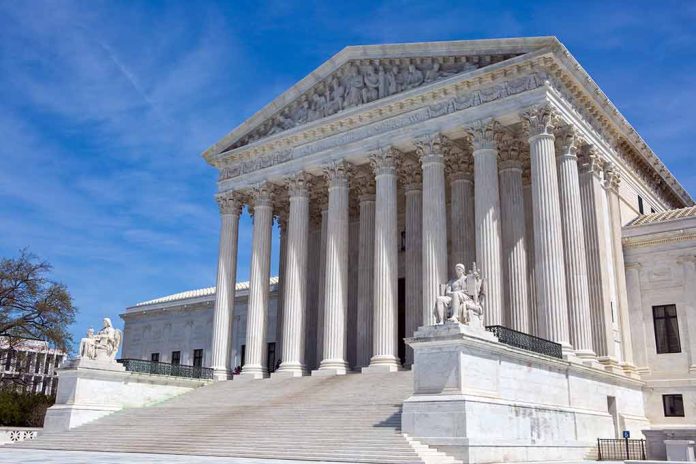
(RightWing.org) – The Supreme Court frequently addresses cases that reshape our legal landscape. While some, like Roe v. Wade, grab headlines; others slip under the radar despite the fact that their their implications are often equally profound. Three cases on the docket for the current session have the potential to redefine regulatory oversight within the US.
CFPB v. Community Financial Services Association
Congress passed the Dodd–Frank Act in 2007 in response to the looming financial crisis of 2008. This law established the Consumer Financial Protection Bureau (CFPB) within the Federal Reserve, granting it the job of overseeing financial rules and handling consumer complaints.
In 2017, the CFPB introduced a regulation restricting lenders from taking money from borrowers’ bank accounts after two unsuccessful withdrawal attempts due to insufficient funds. This led two key industry groups to take issue with the CFPB’s funding.
Their argument? Unlike most agencies, the CFPB gets its money directly from the Federal Reserve, as outlined in Dodd-Frank, § 1017(a)(1). They feel this violates Article I, Section 9 of the Constitution, also known as the appropriations clause.
Why It Matters
Supporters believe that Federal Reserve funding insulates the CFPB from political influence. Detractors say Congress went too far in the Dodd-Frank Act, creating a potentially unconstitutional funding pathway for the bureau.
This case tests the balance between constitutional integrity and regulatory power. An adverse verdict could rein in unchecked regulatory authority.
Loper Bright Enterprises v. Raimondo
In 1984, the Supreme Court’s Chevron v. National Resources Defense Council decision established a key principle: courts should typically defer to federal agencies’ policy-making decisions. They found that agencies have more expertise in their specific fields, and they have a closer connection to elected officials, providing democratic legitimacy.
A 2017 rule about funding for at-sea monitoring of fisheries sparked a new case titled Loper Bright Enterprises v. Raimondo. The issue here isn’t just about fish; it’s whether agencies should have this level of decision-making power.
Loper Bright Enterprises v. Raimondo explicitly asks the Supreme Court to determine whether Chevron should be overruled. Doing so would mark the end of a decision cited in tens of thousands of judicial opinions over the years.
Why It Matters
Advocates argue that Chevron streamlines decisions by tapping into expert knowledge. Opponents worry that it grants agencies an inappropriate ability to bypass the courts.
The outcome could redirect power from specialized agencies to the courts. This could have a chilling effect, complicating and slowing regulatory decisions.
SEC v. Jarkesy
In 2013, the SEC accused radio host George Jarkesy of securities fraud, convicting him through an in-house SEC Administrative Law Judge (ALJ). Jarkesy later challenged this handling of the case based on the Supreme Court’s ruling in Lucia v. SEC, which stated that SEC ALJs were not properly appointed.
Jarkesy argues that the SEC’s in-house process violated his Seventh Amendment jury trial rights, that Congress granted the SEC too much power to select venues, and that ALJ removal rules limit presidential oversight.
Why It Matters
SEC v. Jarkesy could redefine how agencies operate. This finding could affect both the SEC as well as other government entities, such as the FTC and CFPB.
As the Court convenes to deliberate on these cases, their decisions could profoundly impact the administrative pillars of the nation. The outcomes will undoubtedly shape discussions on governance, regulatory power, and constitutional integrity for years.
Copyright 2023, RightWing.org






















